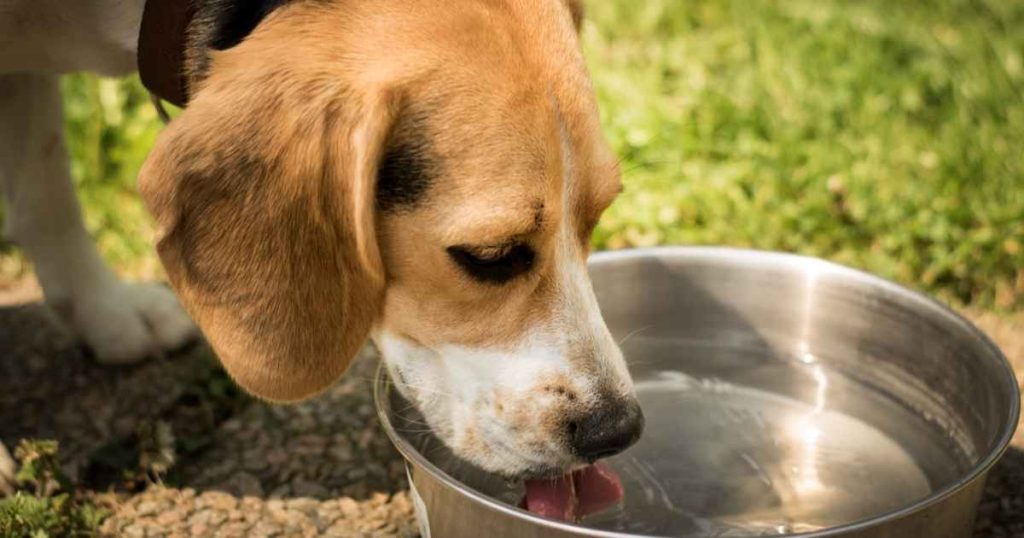
How Much Water Does Your Furry Friend Really Need?
This article explores the importance of canine hydration for dogs, focusing on breed, age, and activity level. It provides tips on how to recognize signs of dehydration and keep your dog hydrated during hot Perth days. Understanding your dog’s hydration needs can make all the difference in keeping them healthy and energetic. Whether you’re planning a day out at Kings Park or enjoying backyard playtime, understanding your dog’s thirst can make all the difference in keeping them content and healthy. Join us in unraveling the mysteries behind your furry friend’s thirst and enjoying a sun-soaked afternoon in Perth.
Importance of Water for Pets
Water is crucial for pets, especially dogs, as it regulates body temperature, lubricates joints, and aids digestion. Dehydration can lead to lethargy and health issues in dogs. Factors like breed size, activity level, and environmental conditions significantly influence a dog’s hydration needs. Understanding a dog’s unique needs allows for better hydration habits, such as introducing ice cubes or water bowls to filter impurities. Wet food provides nutritional benefits and moisture intake. Engaging with your dog during walks or playtime can make hydration fun and routine. By prioritizing proper hydration practices, you’re setting the foundation for a lasting bond filled with adventure and vitality.
Factors Affecting Water Intake
Dogs’ water intake is influenced by various factors, including their diet, environmental conditions, and medical conditions. Dry kibble dogs require more water than wet ones, which have higher moisture content. Understanding these factors is crucial for maintaining a healthy dog’s thirst and overall health. Environmental factors like temperature and humidity also affect water intake, especially during hot summers or strenuous outdoor activities. Certain breeds, like brachycephalic dogs, have unique needs for hydration, such as requiring closer monitoring to prevent dehydration. Additionally, underlying medical conditions like diabetes or kidney disease can significantly alter a dog’s thirst levels, leading to increased water consumption and urination. Monitoring these factors helps dog owners tailor their care routines and ensure optimal health for their furry companions.
Signs of Dehydration in Pets
Pet dehydration symptoms can be subtle but serious if ignored. Here are some common signs:
- Dry gums and nose: A healthy pet should typically have moist gums and a damp nose.
- Loss of skin elasticity: Gently pull the skin at the back of your pet’s neck or between the shoulder blades. Should it fail to return to its original position swiftly, your pet might be experiencing dehydration.
- Sunken eyes: Dehydrated pets may have dull or sunken eyes.
- Lethargy or weakness: Dehydration can cause your pet to become unusually tired, less active, or weak.
- Panting or rapid breathing: Excessive panting, especially when not associated with exercise or heat, can indicate dehydration.
- Dry, sticky gums: Dehydrated pets may have dry, tacky gums instead of being moist.
- Decreased appetite: Dehydrated pets frequently lose interest in food.
- Vomiting or diarrhea. These symptoms can cause dehydration and are also indicators of fluid loss.
- Dehydrated pets tend to urinate less frequently, and their urine may appear darker than normal.
If you suspect your pet is dehydrated, it’s important to provide them with fresh water and consult a veterinarian, especially if the symptoms persist.
Best Sources of Hydration for Pets
Watery fruits and vegetables like cucumbers, watermelon, and strawberries are a beneficial source of hydration for dogs. They provide essential moisture and vitamins, boosting their overall health. Offering these treats as a refreshing snack during hot days can make hydration enjoyable. Ensure that you remove seeds and skin where necessary for safety. Ice cube treats or frozen broths filled with nutrients can also be helpful. You can freeze low-sodium chicken or beef broth in ice trays and serve it to dogs during warm days. Pet water fountains encourage regular drinking and keep water fresher. By incorporating positivity into hydration, you can foster habits that help maintain your dog’s well-being year-round.
Tips for Encouraging Water Consumption
- Incorporate a water fountain into your dog’s routine to engage their natural instincts and make hydration appealing.
• Incorporate ice cubes or floating treats to transform drinking into an engaging activity.
• Enhance your dog’s meals with moisture-rich foods, like wet food or low-sodium broth.
• Freeze homemade broth into fun shapes for a refreshing summer treat.
• Observe signs of dehydration to adjust your approach and ensure your pup stays hydrated.
Common Myths About Pet Hydration
Dogs need water not only when they’re thirsty, but relying solely on this instinct can lead to dehydration, especially in hot weather or after vigorous exercise. Pet owners should provide fresh water throughout the day, regardless of their dog’s apparent need. Another misconception is that a dog’s diet alone can meet its hydration needs, particularly if they consume wet food. Canned food contributes some moisture, but it doesn’t fully compensate for daily water intake. Dry kibble may lead to increased thirst due to its lower moisture content. Prioritizing clean and abundant freshwater is crucial for their routine health checks, just like regular vet visits.
Monitoring Your Pet’s Hydration Levels
Monitoring your dog’s hydration levels is crucial for their overall health and vitality. Factors like activity level, weather conditions, and diet can significantly influence their water needs. Active dogs or those fed dry kibble may require more hydration than sedentary pets on wet food diets. Observing their behaviors, such as excessive panting or lethargy, can provide valuable insights. Including a pet-friendly water fountain can also encourage more frequent drinking. Being proactive about monitoring hydration not only prevents health issues but also enhances their quality of life. By being proactive, you can ensure your dog’s overall well-being.

